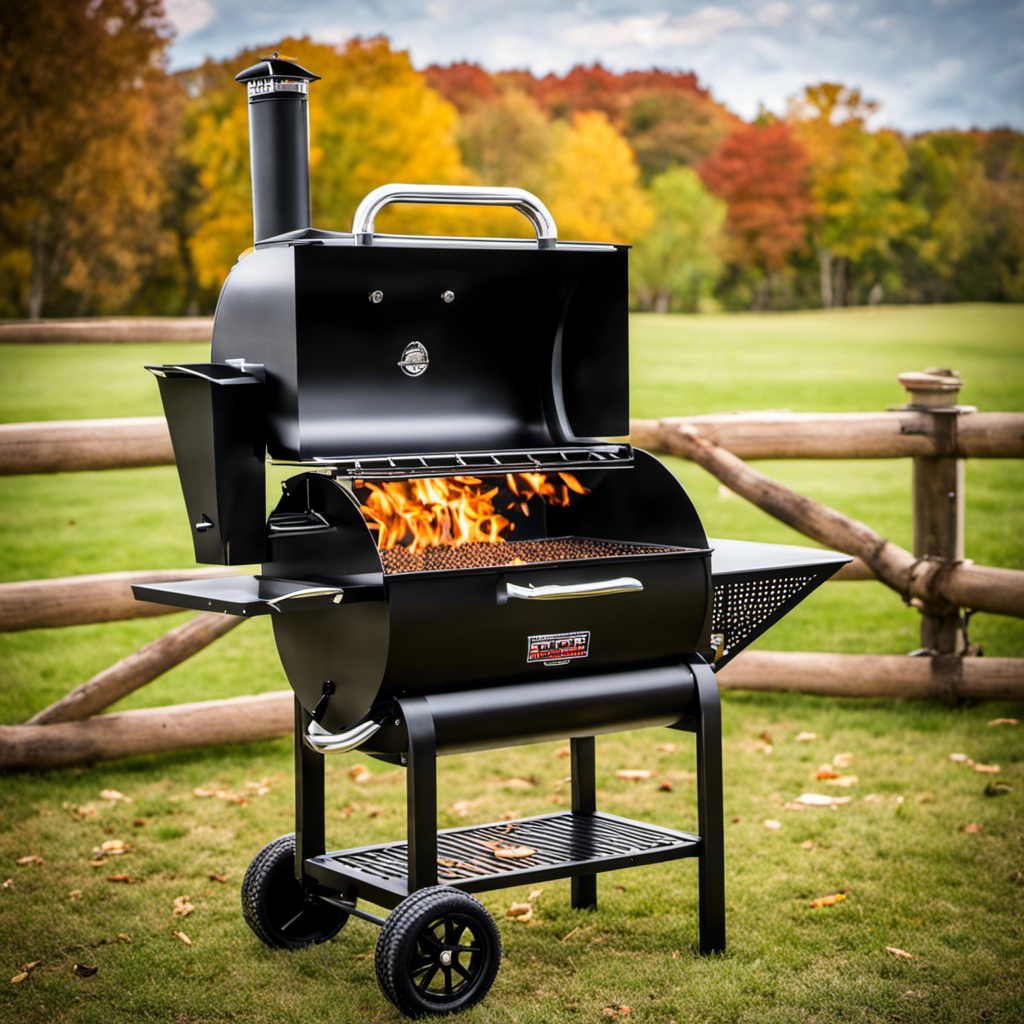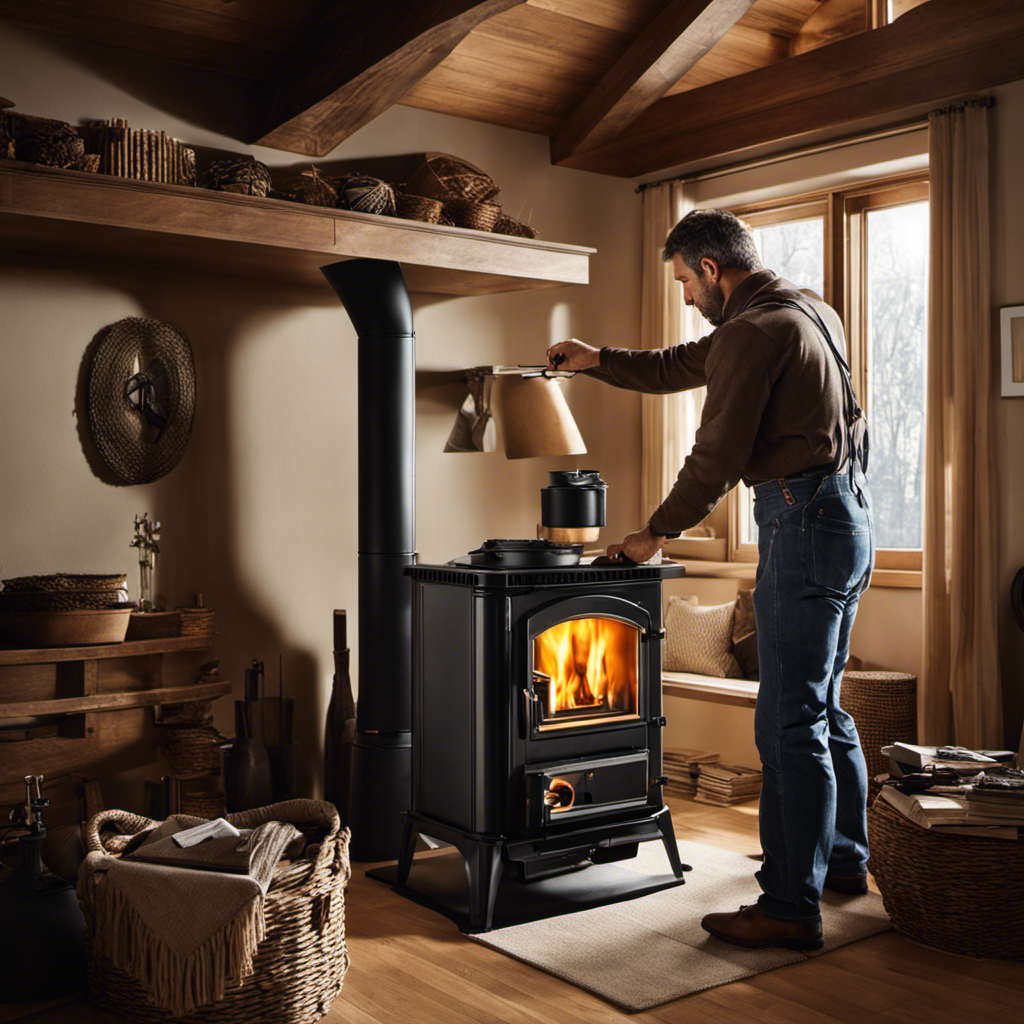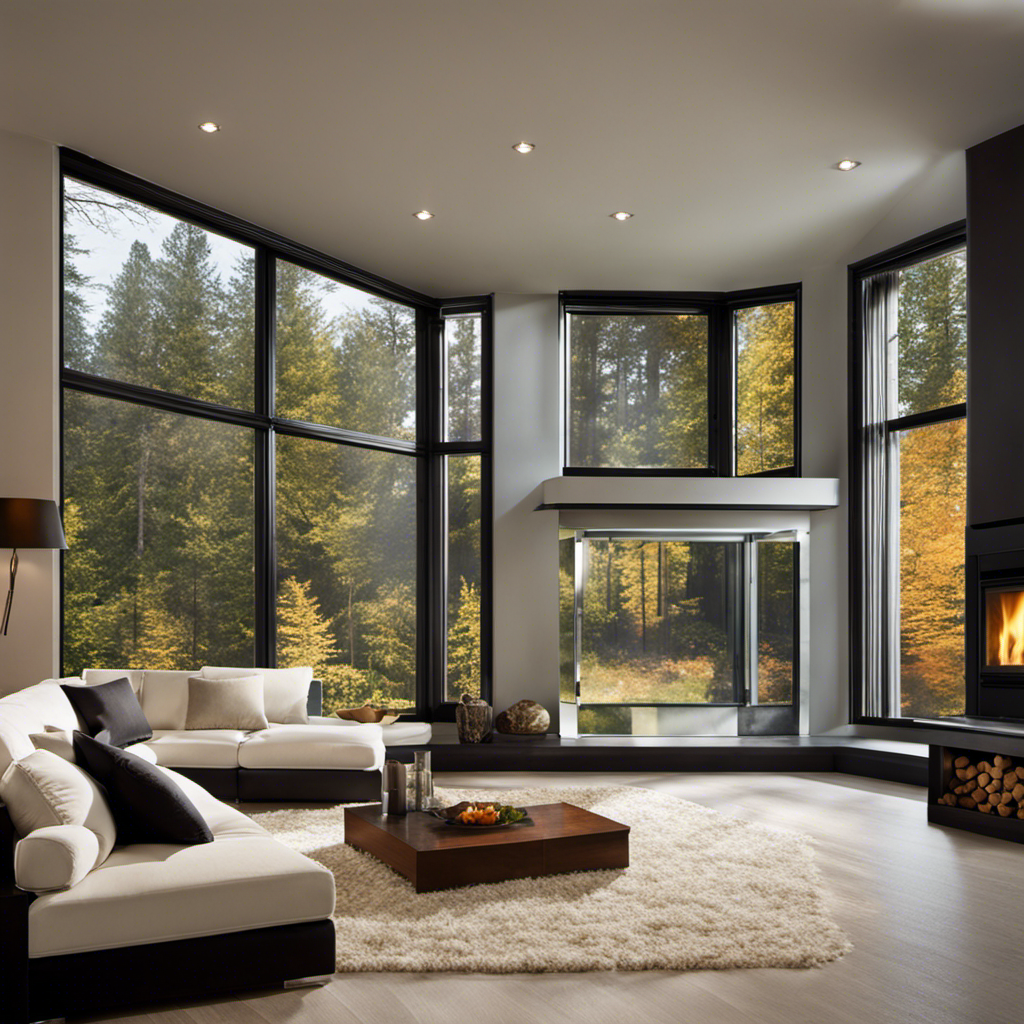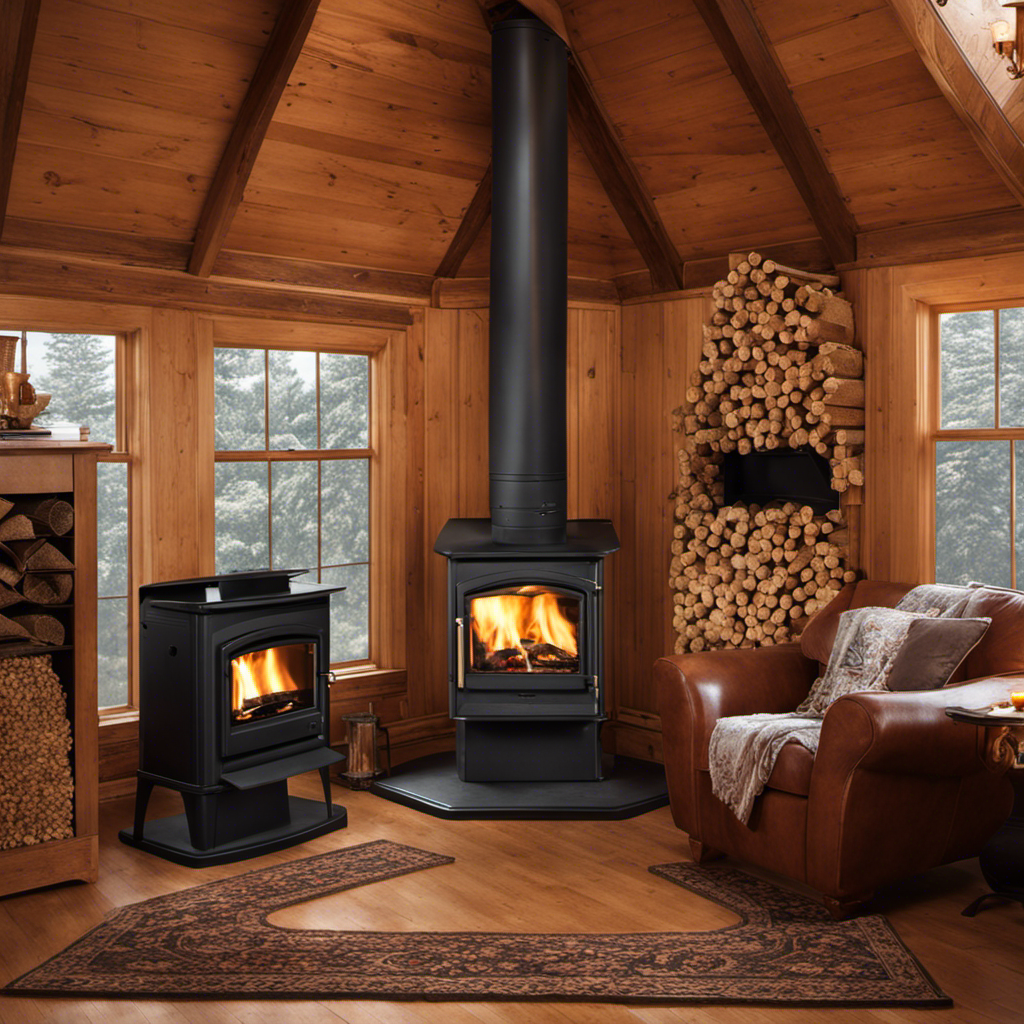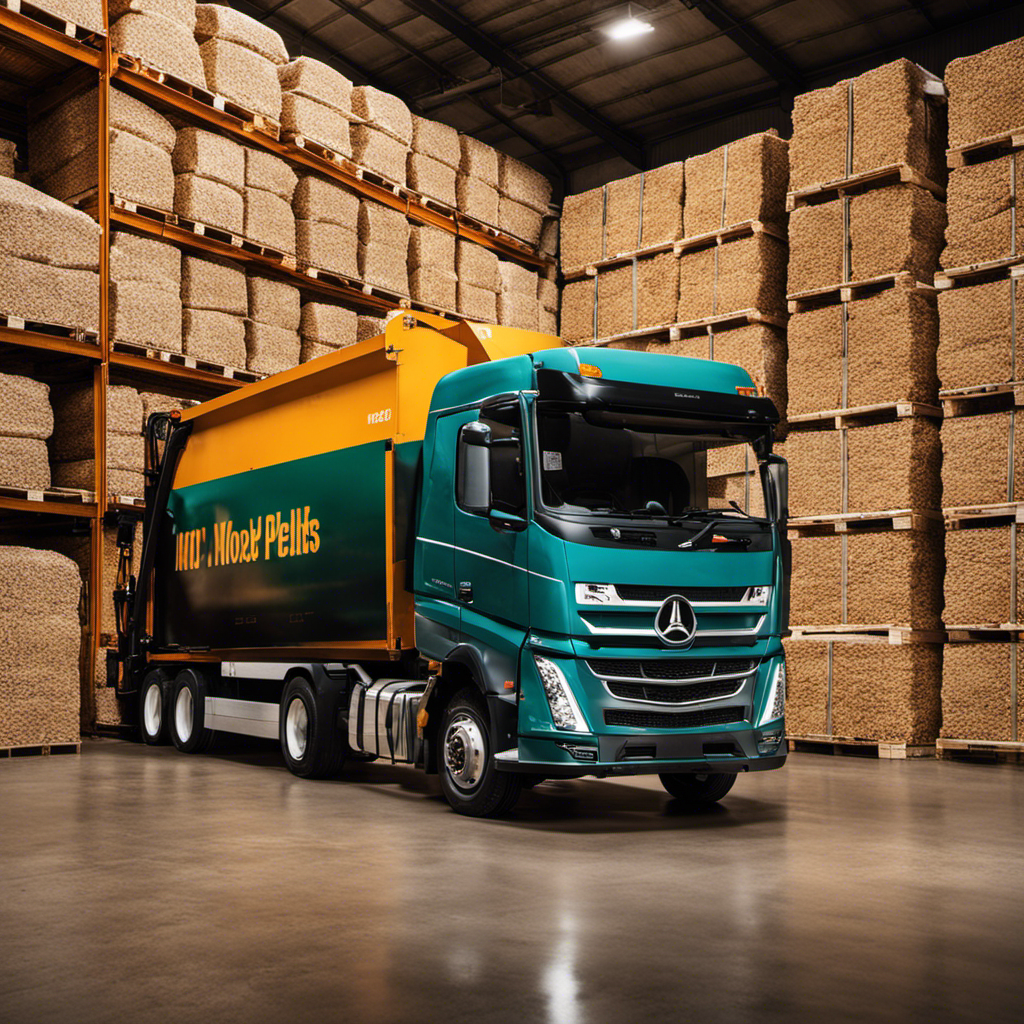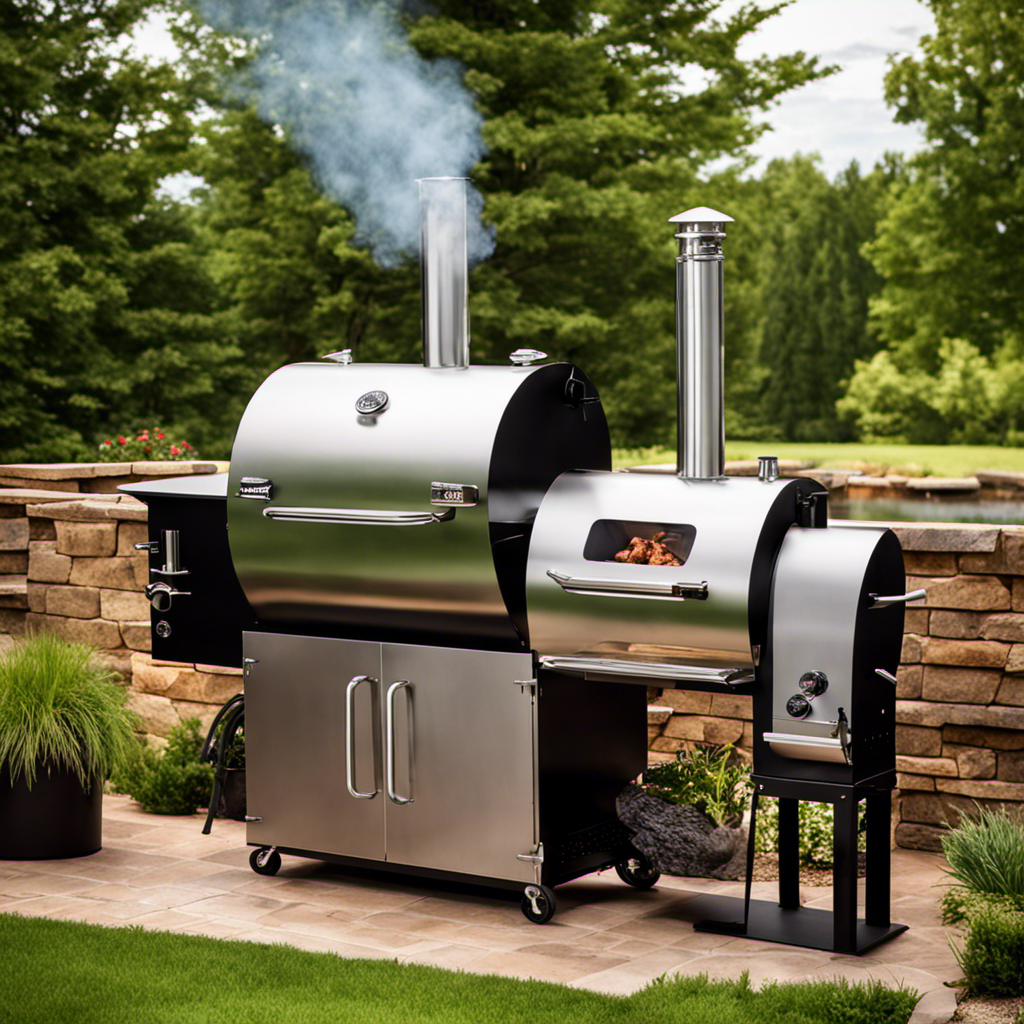My passion for grilling has always been intense, yet I ran into an issue with the correct way to empty the hopper on my Rec Tec Wood Pellet Grill (RT-680). Initially appearing to be an easy task, it ended up being more complicated than I initially anticipated.
That’s why I decided to create this article, to share my knowledge and provide a step-by-step guide on how to empty the hopper safely and efficiently.
So, if you’re facing the same issue, keep reading and let me guide you through the process.
Key Takeaways
- Properly emptying the hopper of a Rec Tec Wood Pellet Grill (RT-680) is important to avoid potential issues and clogs, maintain grill performance, and prioritize safe handling.
- The tools and equipment needed for emptying the hopper include a vacuum cleaner, metal scoop or scoop shovel, trash bag or container, ash vacuum or pellet hopper cleanout system, and heat-resistant gloves.
- Efficient equipment for emptying the hopper is a vacuum cleaner with powerful suction, a removable dust bin for easy disposal, and a long hose for reaching corners. This saves time and effort and ensures effective removal of pellets.
- Safely handling hot pellets involves storing them away from open flames or heat sources, using heat-resistant gloves, avoiding direct contact with bare hands, and being cautious during pellet transfer to prevent accidents and ensure safety.
Importance of Properly Emptying the Hopper
Properly emptying the hopper is crucial to avoid any potential issues. It is important to prioritize safe handling and proper disposal of the wood pellets.
When the hopper is not emptied regularly, it can lead to clogs and affect the overall performance of the grill.
To ensure safe handling, always wear protective gloves when emptying the hopper to prevent any contact with the hot surfaces.
Additionally, it is essential to dispose of the wood pellets properly. Do not throw them in the regular trash as they can pose a fire hazard. Instead, consider using them for composting or find a designated disposal site for wood pellets in your area.
By following these steps, you can maintain the functionality of your grill and promote a safe grilling experience.
Now, let’s move on to the tools and equipment needed for this process.
Tools and Equipment Needed
When it comes to properly emptying the hopper of a wood pellet grill, having the right tools is essential.
The required tools for emptying include a vacuum cleaner, a metal scoop or scoop shovel, and a trash bag or container for collecting the pellets.
Additionally, using efficient equipment such as an ash vacuum or a pellet hopper cleanout system can make the emptying process quicker and more convenient.
Required Tools for Emptying
To empty the hopper, you’ll need a few tools. Ensuring safe handling and proper disposal methods are essential when dealing with wood pellets.
First, you’ll need a good pair of heat-resistant gloves to protect your hands from any hot surfaces or potential burns. Additionally, a sturdy metal scoop or shovel will come in handy for removing the pellets from the hopper.
Make sure to use a container specifically designated for pellet disposal, such as a metal or plastic bucket with a lid. This will prevent any potential spills or accidents during transportation. Remember to always follow local regulations and guidelines for proper disposal of wood pellets.
Now that we have discussed the necessary tools for emptying the hopper, let’s move on to efficient equipment for emptying without wasting any pellets.
Efficient Equipment for Emptying
You can save time and effort by using a vacuum cleaner specifically designed for removing the pellets efficiently. This equipment is specifically designed to efficiently remove the wood pellets from the hopper of your Rec Tec Wood Pellet Grill (RT-680).
Here are some key features of an efficient vacuum cleaner:
-
Powerful Suction: A vacuum cleaner with strong suction power will quickly and effectively remove the pellets from the hopper.
-
Removable Dust Bin: Look for a vacuum cleaner with a removable dust bin for easy disposal of the pellets.
-
Long Hose: A long hose will allow you to reach every corner of the hopper without straining or bending.
By utilizing these efficient techniques and time-saving methods, you can easily and effectively empty the hopper of your grill.
Now, let’s move on to the step-by-step guide to emptying the hopper without wasting any more time.
Step-by-Step Guide to Emptying the Hopper
First, make sure the grill is turned off and unplugged before beginning the process of emptying the hopper. It is essential to prioritize safe handling and proper disposal of the wood pellets. To assist you in understanding the process, refer to the table below for a step-by-step guide:
| Step | Actions |
|---|---|
| 1 | Remove the grates and drip tray from the grill. |
| 2 | Open the hopper lid and inspect for any remaining pellets. |
| 3 | Using a scoop or a small container, carefully remove the pellets from the hopper. |
| 4 | Transfer the pellets to a designated storage container or dispose of them properly. |
| 5 | Clean the hopper thoroughly to remove any residue or dust. |
Tips for Safely Handling Hot Pellets
Now that we’ve covered the step-by-step process of emptying the hopper, let’s focus on some tips for safely handling hot pellets.
When it comes to safe storage, it’s important to keep your pellets in a cool, dry place away from any open flames or heat sources. This will prevent any accidental combustion or melting.
When handling hot pellets, always use heat-resistant gloves to protect your hands from burns. Avoid touching the pellets directly with your bare hands, as they can reach high temperatures and cause severe injuries.
Additionally, be cautious when transferring the pellets from the grill to a storage container, ensuring that no pellets spill or come into contact with your skin. These handling precautions will help prevent accidents and ensure your safety while working with hot pellets.
Now let’s move on to the proper disposal of pellets.
Proper Disposal of Pellets
When it comes to the proper disposal of pellets, there are a few key points to keep in mind.
First, it is important to consider environmentally friendly options for pellet disposal. This can include methods such as composting or using the pellets as a source of fuel for other purposes.
Additionally, it is crucial to ensure safe pellet disposal methods to prevent any accidents or harm.
Finally, recycling wood pellets can be a great way to reduce waste and give them a second life.
Environmentally Friendly Pellet Disposal
To properly dispose of wood pellets in an environmentally friendly way, you can recycle them by repurposing them as fertilizer for your garden or flower beds. Here are some recycling options and composting solutions for wood pellets:
-
Use them as fertilizer: Wood pellets contain organic materials that can enrich the soil in your garden. Simply spread the pellets on the soil surface and allow them to break down naturally, providing essential nutrients to your plants.
-
Create compost: Mix wood pellets with other organic waste, such as kitchen scraps and yard trimmings, to create a nutrient-rich compost. Turn the compost regularly to ensure proper decomposition and use it to improve the soil quality in your garden.
-
Mulch with wood pellets: Spread a layer of wood pellets around your plants to help retain moisture, suppress weeds, and regulate soil temperature.
-
Use them in worm bins: Wood pellets can be added to worm bins to provide bedding material for worms. The worms will break down the pellets and produce nutrient-rich worm castings, which can be used as fertilizer.
Safe Pellet Disposal Methods
One way to safely dispose of wood pellets is by repurposing them as fertilizer for your garden or flower beds. This method not only allows you to get rid of the pellets in an eco-friendly manner but also provides a nutrient-rich boost to your plants.
Before using the pellets as fertilizer, it is important to ensure safe storage and proper pellet grill maintenance. Keep the pellets in a dry and cool area to prevent moisture and mold growth. Regularly clean your pellet grill to remove any leftover pellets or ash that may be present.
By following these steps, you can safely dispose of wood pellets while also maintaining the longevity of your pellet grill.
Transitioning to the next section, let’s explore the benefits of recycling wood pellets.
Recycling Wood Pellets
You can easily recycle your used wood pellets by repurposing them as material for DIY crafts or for starting a fire in your outdoor fire pit. Not only does this help reduce waste, but it also allows you to get creative and find new uses for your old pellets. Another way to recycle wood pellets is by using the wood ash that is left behind after burning them. Wood ash can be used as a natural fertilizer for plants, as it contains nutrients like potassium and phosphorus. Additionally, it can be used to control pests in your garden or as a natural de-icer during winter. By recycling wood pellets and their ash, you can minimize your environmental impact and find practical uses for these materials.
| Repurposing Ideas | Benefits |
|---|---|
| DIY crafts | Creativity and reduced waste |
| Fire starter | Convenient and cost-effective |
| Natural fertilizer | Nutrients for plants |
| Pest control | Chemical-free alternative |
Now, let’s move on to the next topic of maintenance and cleaning after emptying the hopper.
Maintenance and Cleaning After Emptying the Hopper
After emptying the hopper, make sure to properly clean and maintain your REC TEC Wood Pellet Grill (RT-680). Maintenance is crucial to ensure the longevity and optimal performance of your grill.
To prevent pellet buildup and ensure smooth operation, follow this maintenance checklist. First, remove any remaining pellets from the hopper. Then, using a vacuum or brush, thoroughly clean the hopper to remove any dust, debris, or leftover pellets.
Next, clean the auger and fire pot to prevent clogs and improve pellet flow. Inspect and clean the grill grates, making sure they are free from grease and residue. Finally, wipe down the exterior of the grill with a damp cloth.
By following these steps, you can maintain your REC TEC Wood Pellet Grill (RT-680) and prevent future issues.
Now, let’s move on to troubleshooting common issues during hopper emptying.
Troubleshooting Common Issues During Hopper Emptying
If there are any problems encountered during the hopper emptying process, it’s important to address them promptly to ensure the smooth operation of your REC TEC Wood Pellet Grill (RT-680). Troubleshooting hopper issues and preventing hopper blockages are essential steps to maintain the efficiency of your grill.
Here are some tips to help you troubleshoot hopper problems:
-
Check for pellet jams: Inspect the hopper for any pellet blockages that may be causing the issue.
-
Clean the hopper regularly: Regularly clean the hopper to prevent a buildup of dust and debris that can lead to blockages.
-
Use high-quality pellets: Low-quality pellets can produce more ash and can be more prone to causing blockages in the hopper.
-
Store pellets properly: Ensure that your pellets are stored in a dry and cool place to prevent moisture from causing clumping and blockages.
-
Check the auger: Inspect the auger for any damage or misalignment that may be affecting the flow of pellets into the grill.
Frequently Asked Questions
Can I Empty the Hopper While the Grill Is Still Hot?
No, it is not safe to empty the hopper while the grill is still hot. Emptying the hopper should be done only when the grill has cooled down to avoid any potential accidents or injuries.
What Should I Do if I Accidentally Spill Pellets While Emptying the Hopper?
If I accidentally spill pellets while emptying the hopper, I should immediately clean up the spill to prevent any potential hazards or damage. To prevent pellet spillage, I can be more cautious and steady while emptying the hopper.
Can I Reuse the Pellets That I Have Emptied From the Hopper?
No, I cannot reuse the pellets that I have emptied from the hopper. It is best to use fresh pellets for optimal grilling results as they provide better flavor and consistent heat.
How Often Should I Empty the Hopper to Maintain the Grill’s Performance?
To maintain the grill’s performance, it is recommended to empty the hopper completely every time. Pellets can stay in the hopper for a few weeks before they start to go bad.
Is It Necessary to Clean the Hopper After Emptying It?
Yes, it is necessary to clean the hopper after emptying it. To properly clean the hopper after use, remove any remaining pellets, wipe down the interior with a damp cloth, and ensure it is dry before adding new pellets.
Conclusion
In conclusion, properly emptying the hopper of your REC TEC wood pellet grill (RT-680) is crucial for maintaining the performance and longevity of your grill. By following the step-by-step guide and tips provided, you can ensure a safe and efficient process.
Remember, ‘don’t put all your eggs in one basket’ and dispose of the pellets responsibly. Regular maintenance and cleaning after emptying the hopper will keep your grill in top-notch condition.
If you encounter any issues, refer to the troubleshooting section for guidance.
Happy grilling!
Growing up surrounded by the vast beauty of nature, Sierra was always drawn to the call of the wild. While others sought the comfort of the familiar, she ventured out, embracing the unpredictable and finding stories in the heartbeat of nature.
At the epicenter of every remarkable venture lies a dynamic team—a fusion of diverse talents, visions, and passions. The essence of Best Small Wood Stoves is crafted and refined by such a trio: Sierra, Logan, and Terra. Their collective expertise has transformed the platform into a leading authority on small wood stoves, radiating warmth and knowledge in equal measure.

